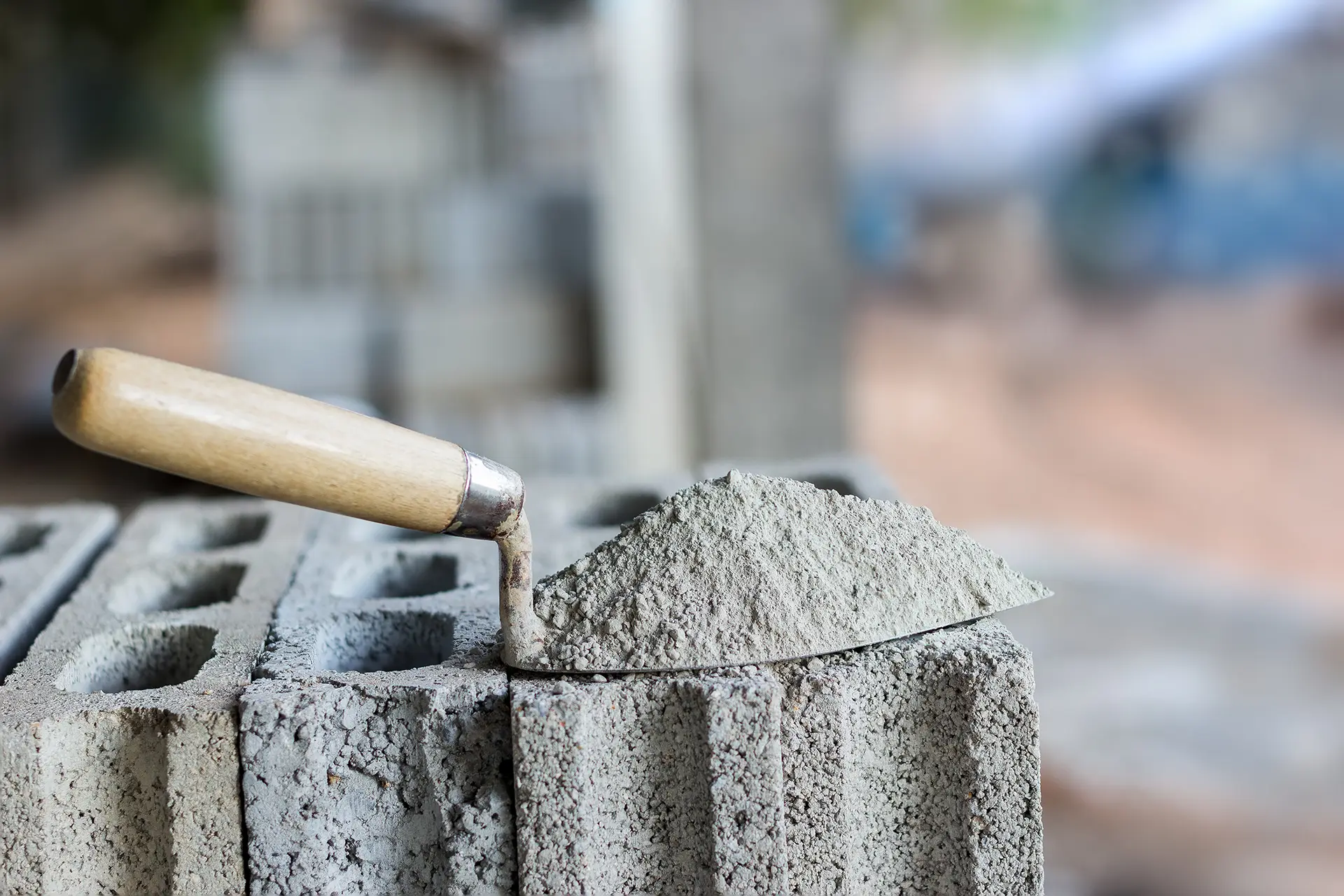- September 28, 2023

Repurposing Mine Tailings Sand Into Valuable Concrete Aggregates
One of the most pressing issues in mine closure is the management of mine tailings, a mine waste byproduct resulting from the extraction and treatment of mineral ores. Traditional mine closure methods often involve depositing mine tailings in on-site tailings storage facilities (TSF), which can present environmental risks such as water quality compliance and habitat disruption (Ikotun et al., 2022).
The urgency to address these challenges has given rise to some innovative solutions. One particular solution is the repurposing of mine tailings sand as aggregates for concrete. The popularity of this innovative solution stems from a desire to embed the principles of circular economy; finding value in what was once considered waste.
Mine Tailings Sand: Properties and Composition
Mine tailings sand consists of fine-grained materials comprising sand, silt, and clay. The specific composition of mine tailings sand can vary widely depending on the type of ore being processed and the extraction techniques employed. Generally, mine tailings sand has a higher mineral content compared to natural sand, making tailings sand potentially useful as construction materials (Ikotun et al., 2022).
One notable aspect of mine tailings sand composition is its diverse composition. Tailings sand often contains trace amounts of metals, such as copper, some of which can serve as cementitious materials in concrete mixes. This unique attribute enhances the concrete’s strength, durability, and workability, optimizing its overall performance (Ikotun et al., 2022). Chemical compounds also commonly found in tailings sand can include SiO2, Al2O3, CaO, and Fe2O3, although the quantities of these compounds can vary significantly (Gou et al., 2019).
The diversity of tailings composition means that classifying tailings based on their ore sources or refining processes is insufficient for material researchers looking to comprehend the nature of tailings and determine how best to repurpose them effectively (Gou et al., 2019).
Comprehensive Testing and Quality Control for Concrete Production
Before incorporating mine tailings sand into concrete mixes, characterization and comprehensive testing of the tailings are critical to gain a thorough understanding of tailings properties and their potential for repurposing. Factors such as particle size distribution, mineralogy, and the presence of potentially harmful elements must be considered. This ensures that the tailings meet the required specifications for use in construction, assuring the safety and performance of the resulting concrete structures.
In most literature, common comprehensive tests of using tailings sand as concrete aggregates include:
- Granulation process: To examine the particle size distribution, ensuring that the tailings sand complements other components of the concrete mix—the optimal powder blend (Peys et al., 2022).
- Chemical and leaching tests: To identify potentially harmful substances within the tailings sand, allowing mitigation measures to be implemented if necessary (Ramos-Hernández & Pérez-Rea, 2021).
- Mechanical properties: To test for compressive strength and durability, ensuring that the tailings’ performance characteristics align with the requirements of the intended concrete application (Gou et al., 2019).
Monitoring the sourcing, handling, and processing of tailings sand for quality control is equally important (Aguilar Veramendi & Lama Gutierrez, 2020). Quality control measures can include regular sampling and testing of tailings from various locations within the storage facility, as well as rigorous quality control protocols implemented during concrete production. With rigid quality control standards, the construction industry could confidently embrace mine tailings sand as a sustainable alternative to traditional aggregates while ensuring the safety and reliability of concrete structures.
Economic and Technical Benefits of Using Tailing Sand as Aggregates
The properties of tailings sand offer the potential to reduce the long-term environmental impact and waste management costs while meeting the supply demands of construction and infrastructure development. With the decreased availability of natural sand quarries for aggregate production (Kuranchie et al., 2015), traditional aggregates like natural sand may be costly to harvest and transport, making them more expensive to use in concrete mixes. Mine tailings sand may offer a more affordable option. Mining companies could potentially create new revenue by selling tailing sand or decrease their supply costs by using the tailings sand within their operations.
Reusing waste material can also lower expenses and resources related to tailings disposal (Kuranchie et al., 2015; Arbili et al., 2022). TSF structures demand continuous monitoring and maintenance to effectively manage the high level of associated risks (Peys et al., 2022). Repurposing tailings sand into useful construction materials reduces the volume of tailings that need to be managed within the closure plan, thereby lowering the costs associated with the decommissioning of these structures in the future.
Tailings’ unique composition is a challenge in terms of disposal and environmental management (Peys et al., 2022), and using tailings sand as concrete aggregates could be a form of mitigation. Due to the high mineral content in mine tailings, including potentially reactive sulphur compounds and heavy metals, unmanaged tailings can cause adverse environmental impacts (Kuranchie et al., 2015). Some research has shown that encapsulating tailings sand in cement mixtures, such as Portland cement mixtures, effectively immobilizes and insolubilizes these heavy metals, preventing their release into the surrounding environment, and decreasing pollution potential (Méndez et al., 2022; Lalangui et al., 2021).
Mine tailings sand has been found to exhibit favourable performance characteristics in concrete, offering good compressive strength and durability (Kuranchie et al., 2015). It also exhibits compatibility with various concrete mix designs, making it a versatile and adaptable material for construction projects.
Okane’s Approach
Okane has international experience in mine closure and mine waste management, leveraging expertise in tailings management and environmental geochemistry to provide our clients with the best closure plan, uncovering the highest value future land use. As part of our mine closure vision and alternatives assessment process, we identify valorization opportunities for materials remaining on-site post-closure. We look for economic opportunities, like the repurposing of mine rock and tailings sand, to identify value in domains which have previously been considered only as liabilities. Our commitment to innovative mine closure solutions and responsible mining practices extends beyond our core services. We are passionate about collaborating across industries to realize opportunities like using mine tailings sand in concrete production for increased sustainable practices in the mining and construction industries.
References
Aguilar Veramendi, J. A., & Lama Gutierrez, J. J. (2020). Influencia de sustitución del agregado fino por relave, Mina Santa Luisa, sobre la resistencia a compresión del concreto [Influence of replacing fine aggregates with tailings from Santa Luisa mine on the compressive strength of concrete]. Escuela de Ingenieria Civil – Huaraz, 306. https://repositorio.ucv.edu.pe/handle/20.500.12692/58168
Arbili, M. M., Alqurashi, M., Majdi, A., Ahmad, J., & Deifalla, A. F. (2022). Concrete made with iron ore tailings as a fine aggregate: A step towards sustainable concrete. Materials, 15(18). https://doi.org/10.3390/ma15186236
Gou, M., Zhou, L., & Then, W. Y. (2019). Utilization of tailings in cement and concrete: A review. Science and Engineering of Composite Materials, 26(1), 449–464. https://doi.org/10.1515/secm-2019-0029
Ikotun, J., Adeyeye, R., & Otieno, M. (2022). Application of mine tailings sand as construction material – a review. MATEC Web of Conferences, 364. https://doi.org/10.1051/matecconf/202236405008
Kuranchie, F. A., Shukla, S. K., Habibi, D., & Mohyeddin, A. (2015). Utilization of iron ore tailings as aggregates in concrete. Cogent Engineering, 2(18). https://doi.org/10.1080/23311916.2015.1083137
Lalangui, L., Méndez, D., & Jiménez-Oyola, S. (2021). Caracterización de relaves mineros para su aprovechamiento en la fabricación de materiales de construcción [Characterization of tailings for their use in the production of construction materials]. Tesis de Minas. https://www.dspace.espol.edu.ec/handle/123456789/55505
Méndez, D., Guzmán-Martínez, F., Acosta, M., Collahuazo, L., Ibarra, D., Lalangui, L., & Jiménez-Oyola, S. (2022). Use of tailings as a substitute for sand in concrete blocks production: Gravimetric mining wastes as a case study. Sustainability, 14(23). https://doi.org/10.3390/su142316285
Peys, A., Snellings, R., Peeraer, B., Vayghan, A. G., Sand, A., Horckmans, L., & Quaghebeur, M. (2022). Transformation of mine tailings into cement-bound aggregates for use in concrete by granulation in a high intensity mixer. Journal of Cleaner Production, 366. https://doi.org/10.1016/j.jclepro.2022.132989
Ramos-Hernández, M.I.,Pérez-Rea, M.L. (2021). Characterization of mine tailings in their natural state and stabilized with cement, focused on construction. Ingeniería Investigación y Tecnología, 22(02), 1-9. https://doi.org/10.22201/fi.25940732e.2021.22.2.010
